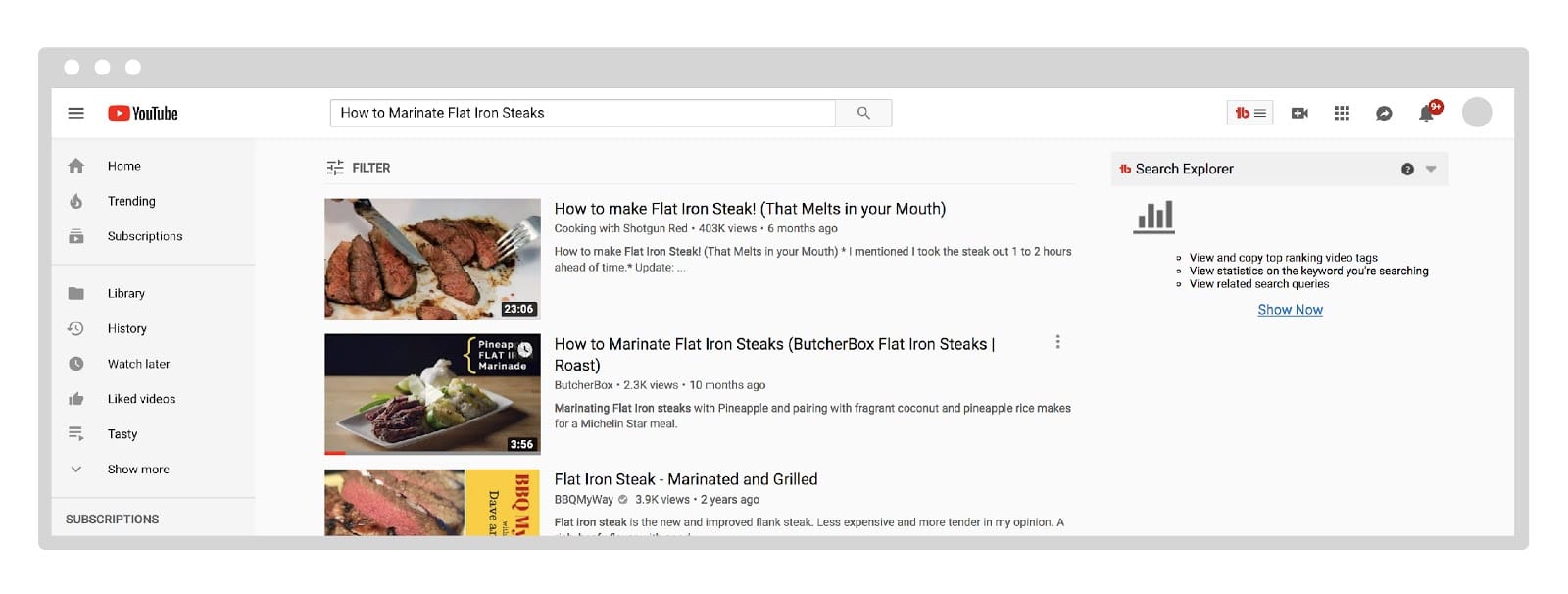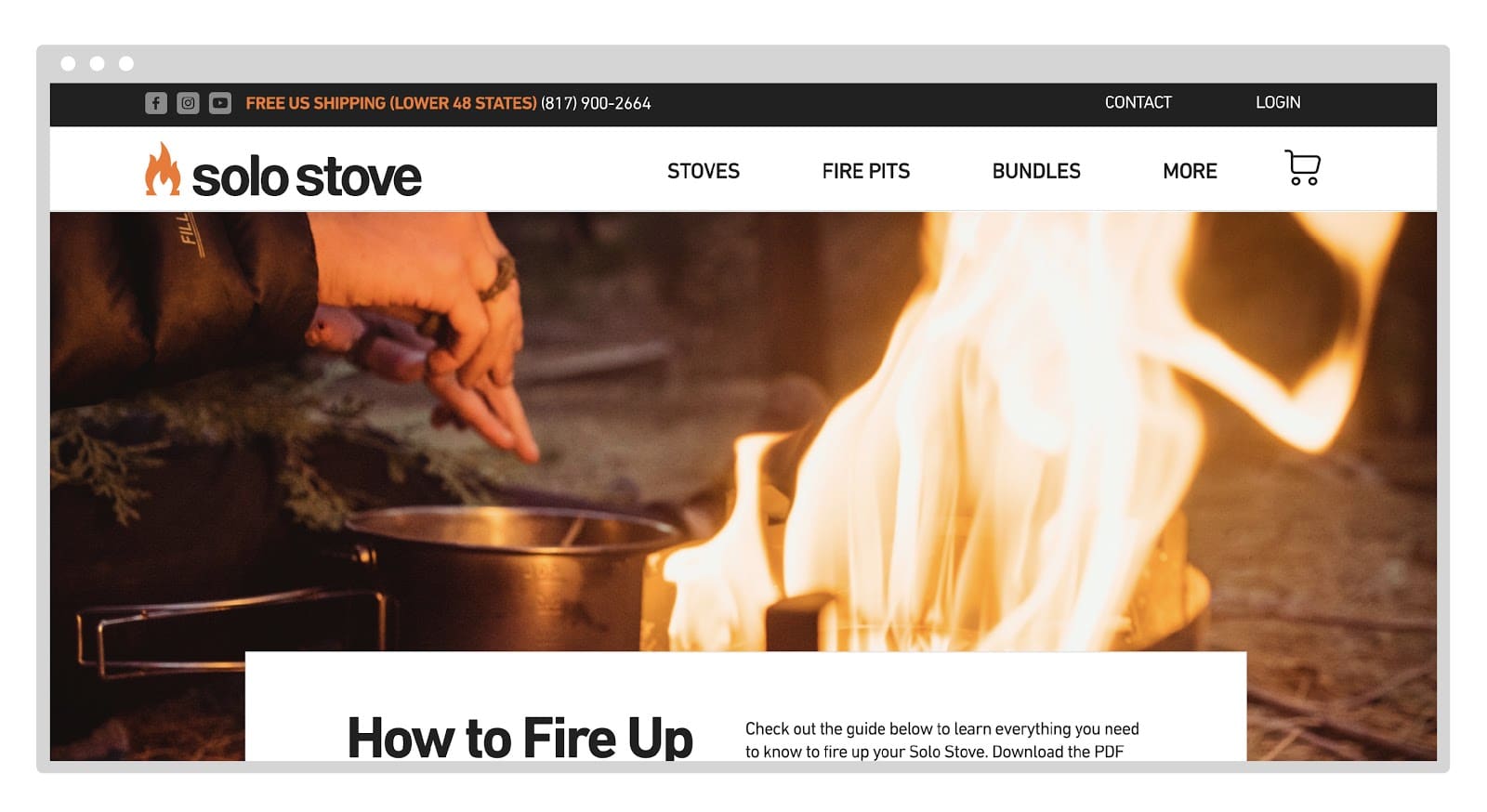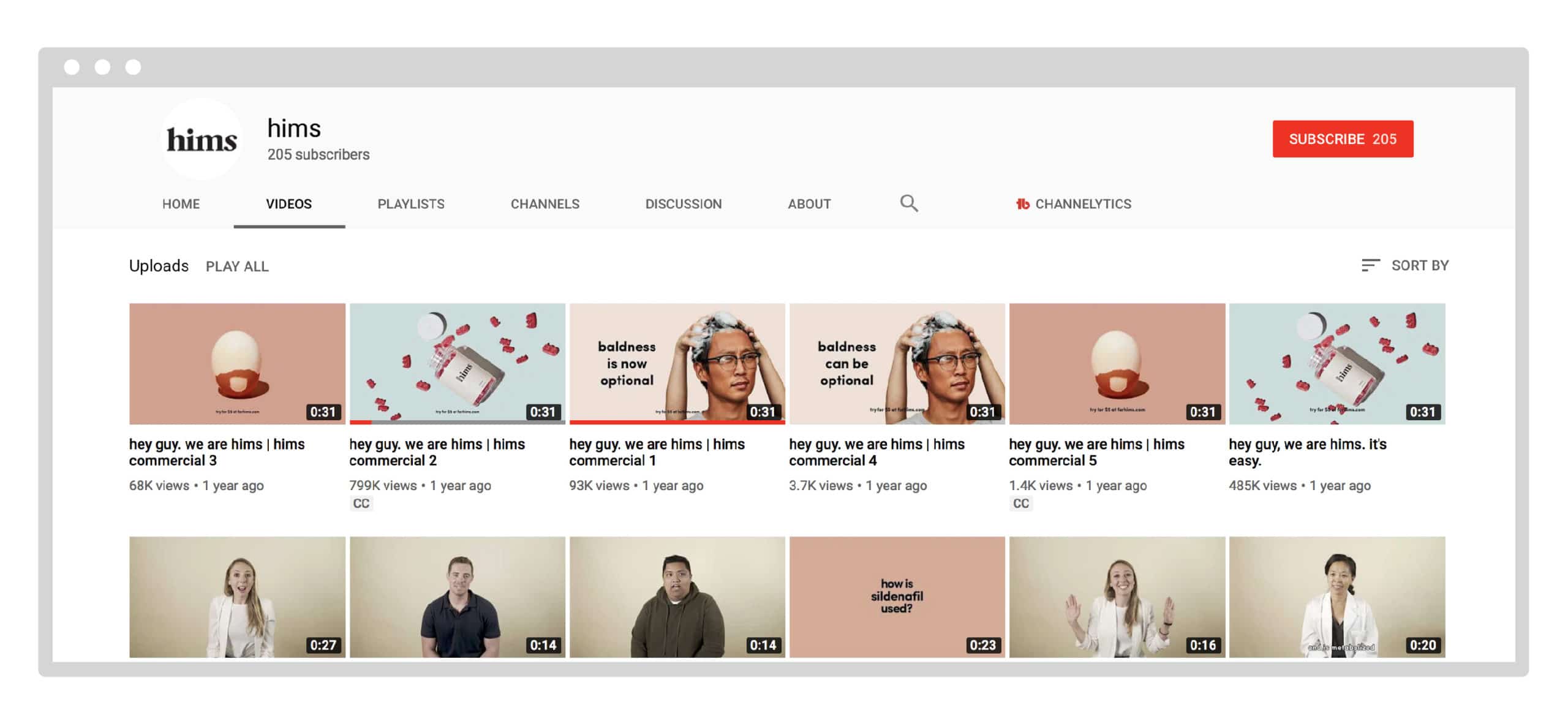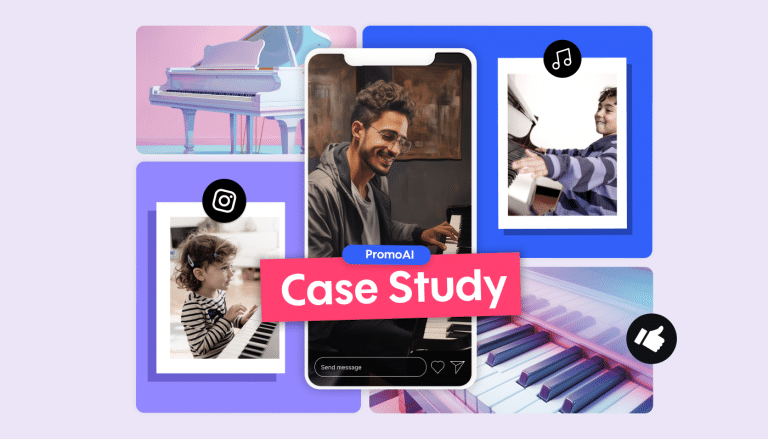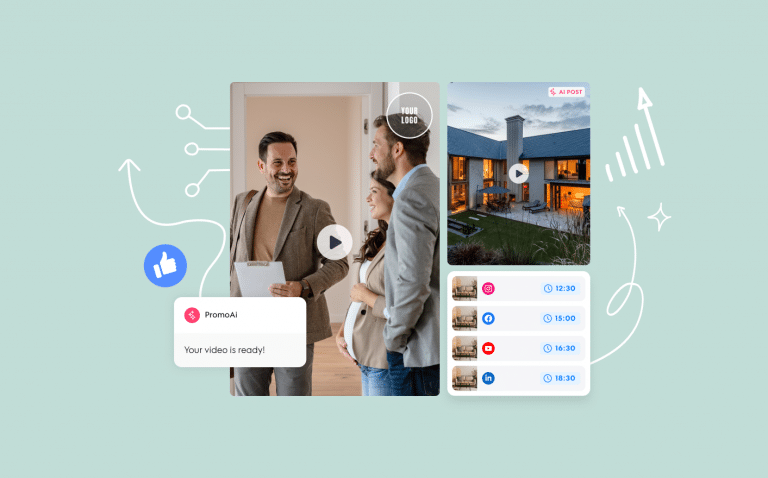
10 Influential Brands That Sell With Video
Online video consumption has grown at an unfathomable rate. Studies predicted that 2019 would be the year where 80% of global internet consumption would be video content, and we’re on point to hit that mark.
What’s even more impressive about video content is just how big of an impact it has on turning passive viewers into paying customers.
- 64% of consumers purchase after watching branded social video content. (source)
- 1 in 4 shoppers says they’ve used YouTube to search for a video related to a product they’re considering while in store. (Google)
- Online shoppers who view demo videos are 1.8x more likely to purchase than non-viewers. (Insivia)
Video, when done correctly, can convert viewers into ready-to-buy customers. And when brands manage to create videos that captivate their audience, they usually end up seeing results in the form of dollar signs. Give our video maker a try and see the results first hand!
We scoured the web to find brands who were taking action and implementing video to help drive sales.
In this post, we’ll highlight 10 incredible companies that are using video to drive direct sales and purchases and what you can learn (and steal) from their approach to implement as part of your own strategy. Pay close attention to the call to action examples you see each brand use.
10 brands who are winning sales with video (and what you can steal from their playbook to do the same)
1. Moment Lenses
Steal this idea: Add video to your product emails to increase open-rate and CTR that help drive sales.
Mobile photography brand, Moment, started with a simple idea — make the best lenses for mobile photography. Since they launched their first Kickstarter campaign, they have grown into a successful e-commerce business that creates both amazing products and great video.
Their biggest video publishing platform is YouTube, where videos geared towards aspiring photographers and videographers fuel their passion with helpful tips and tutorials.
But Moment doesn’t simply publish content on YouTube and hope for the best.
No, these guys are running a business requiring strategy, not just a hope and prayer.
While video is at the center of their content creation, they make sure to incorporate their videos into their email marketing efforts. And they do this so incredibly well that it’s the reason we’ve included them on the list.
But why do this? Well, if you’re looking for more sales consider this:
Email has an average ROI of $44 for every $1 spent, and adding video to emails has shown to increase open-rate by 5X and led to a 200%-300% boost in click-through-rate.
So it absolutely makes sense to mix video with email marketing, and Moment does this mix masterfully.
Nearly every email they send promotes a recent video they’ve created.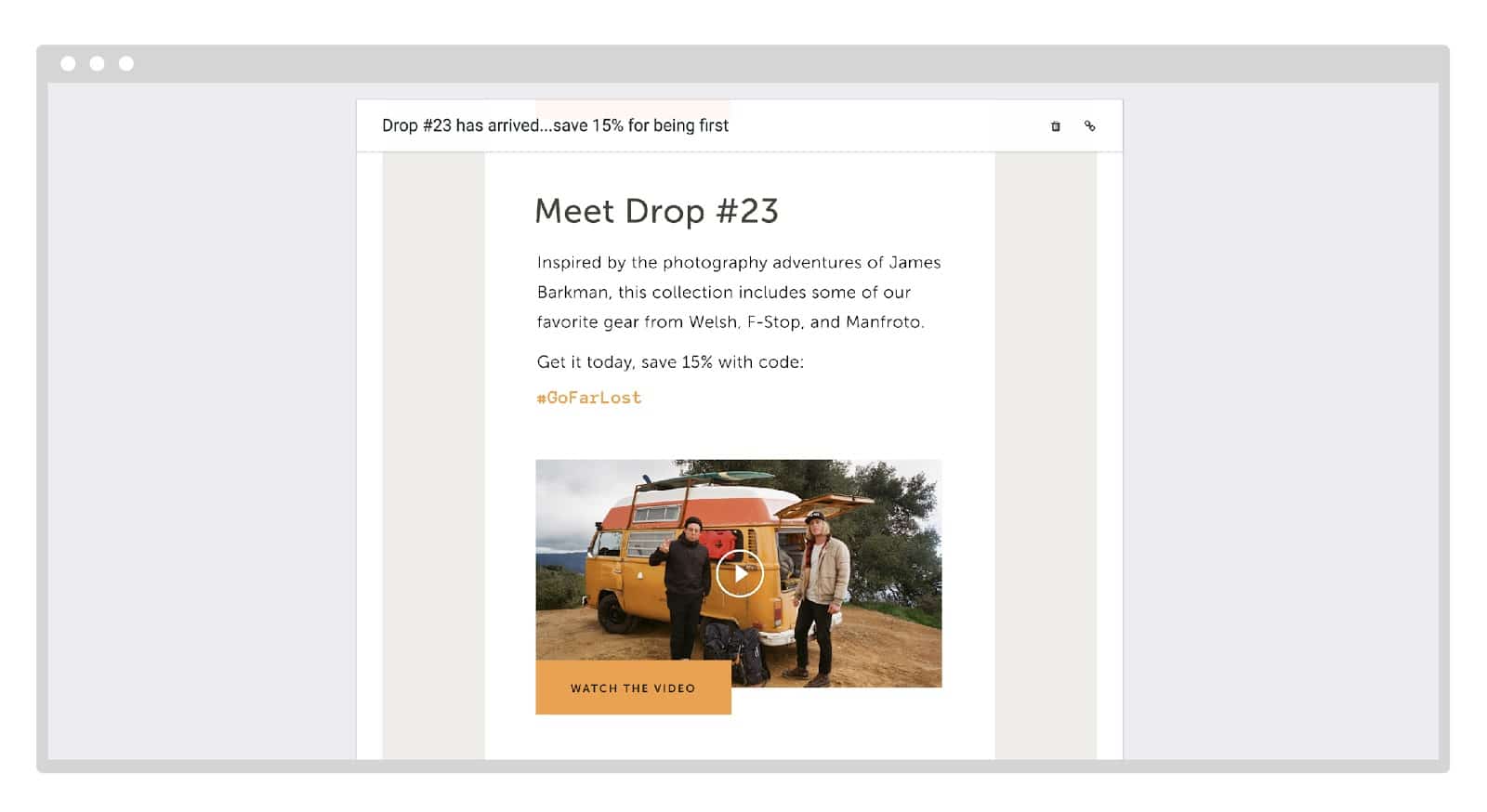
Since you can’t watch videos directly within an email, Moment improvised a workaround by inserting either gifs or creating an image of their video with a play button overlay.
These images and gifs naturally attract clicks, making email efforts even more effective.
You can do the same when adding video to your emails. Then link these to your dedicated product or content pages so that all clicks on these images go to the same place. Most of Moment’s emails use this tactic to help their email CTR while adding the calls-to-action in all the right places (such as buttons and links).
So take a note from this amazing brand’s playbook and use it to your advantage.
Not many brands combine video with email marketing and the ones that do are often inconsistent with what and how they do this.
However, Moment has a good mixture of the two. It’s a great tactic you can use to boost your sales while helping your email campaigns perform better, too.
2. REI
Steal this idea: Embed videos on product and content pages to increase conversion.
If you’re looking for a brand that tests a lot of different types of video, then REI is a prime example.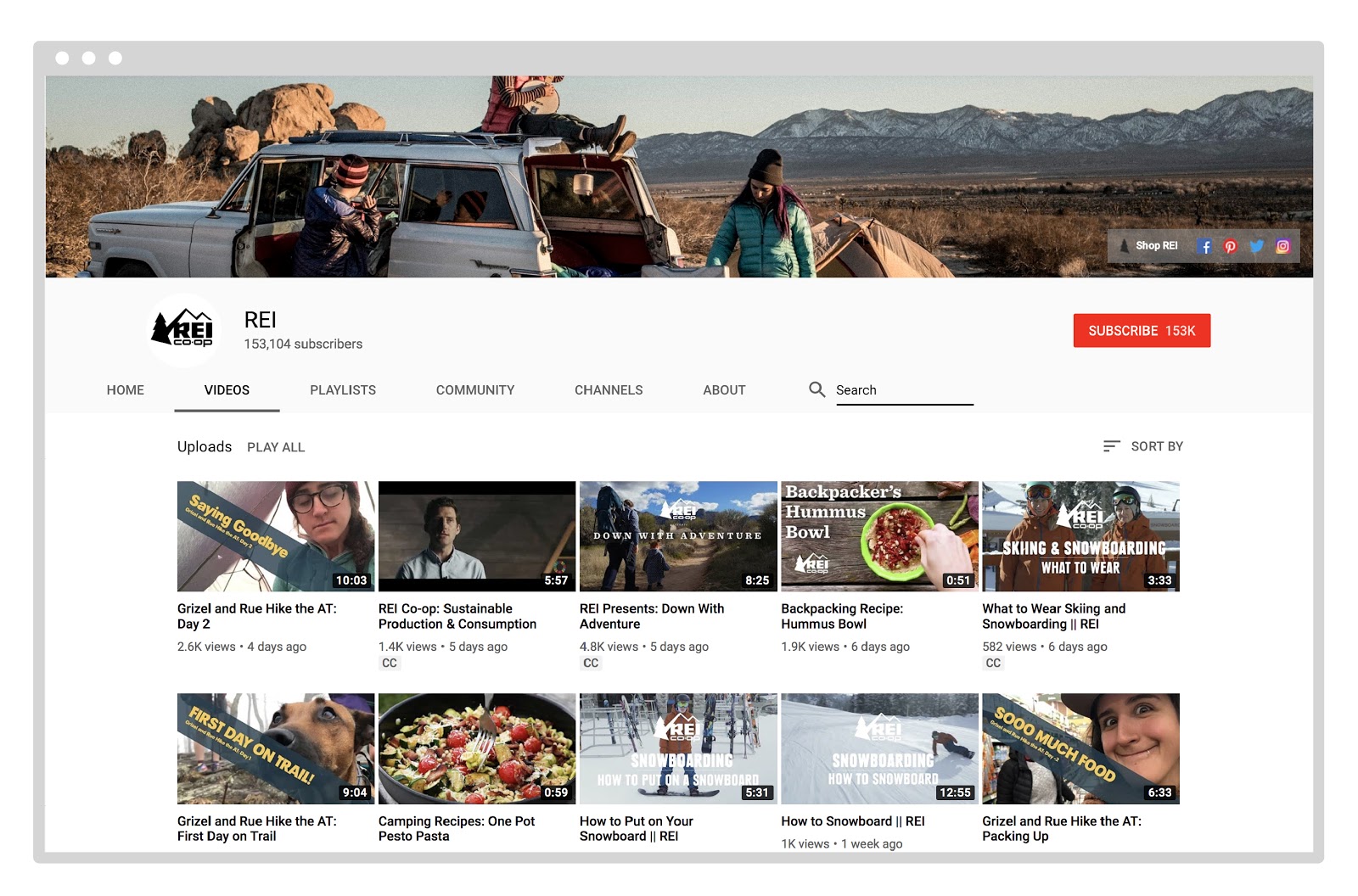
Their YouTube channel features everything from long-form videos that capture artfully told stories to vlogs featuring team members and educational, how-to content.
However, in terms of sales, REI does something very strategic with their video content.
Instead of only publishing content on YouTube, they also place them on their REI website by embedding them in either a content or product page alongside complementing copy.
This is an important tactic that can add fuel to SEO and sales.
According to Social Media Today, videos on your website can increase “dwell time” by keeping people on your site up to 60% longer.
By directing your audience across your marketing channels to videos that live on your own site you potentially lower friction and help a viewer go from watching a video to finding and purchasing products all within your website.
This not only equates to increasing brand awareness but also makes it easier to close sales, and all thanks to embedding videos on your site.
As we’ve seen, REI does this proficiently, but they’re not the only brand on this list executing this tactic. And with so many people doing it, it’s a good indicator that it works.
3. ButcherBox
Steal this idea: Do YouTube-specific keyword research to find great video ideas that rank and help sell products.
ButcherBox has a unique product offering — they sell high-quality, grass-fed meat and deliver it right to your doorstep.
As a newer brand looking to maximize ROI, ButcherBox uses video very strategically.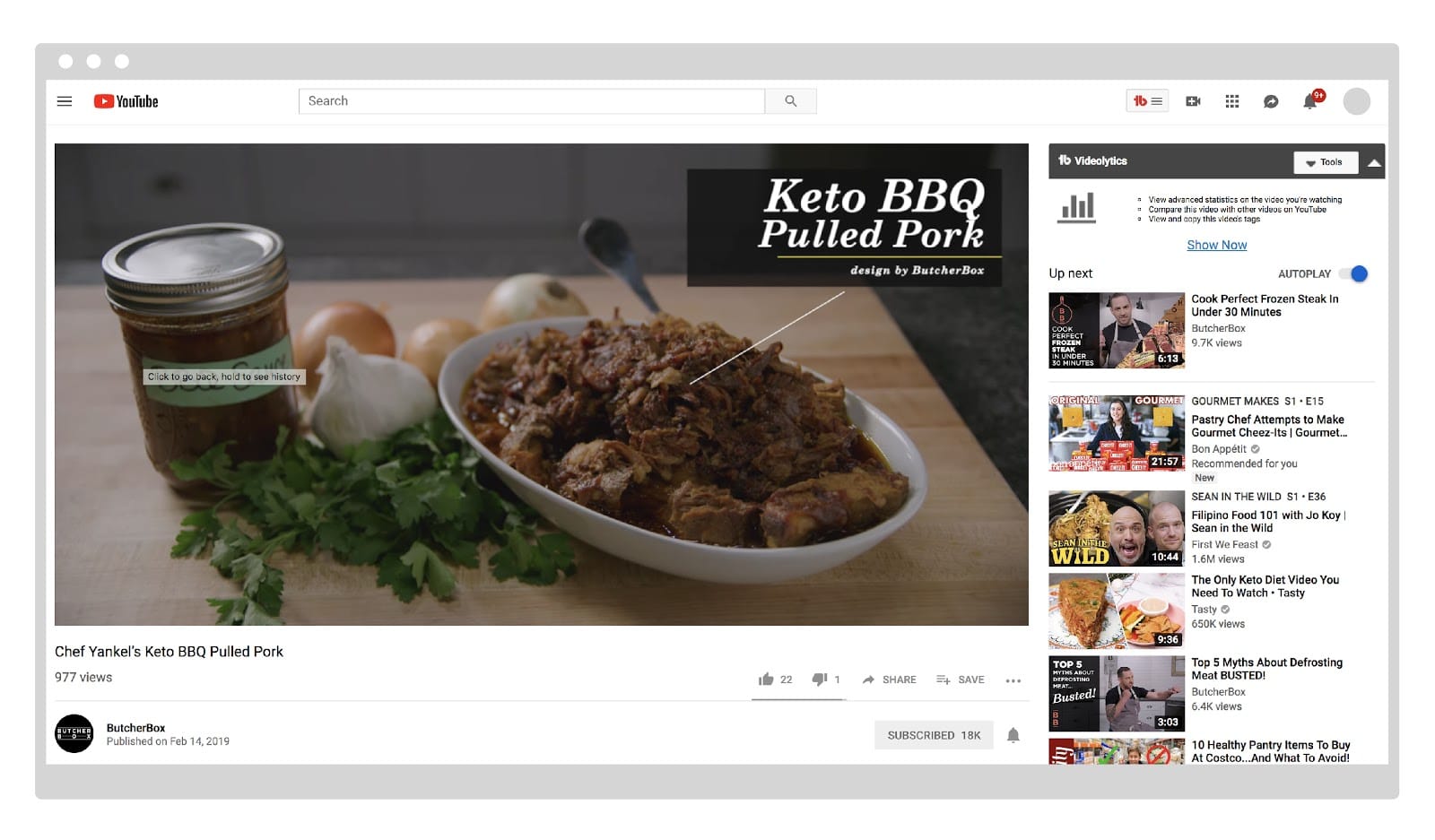
As you look through their YouTube content, you might notice a lot of their video content clearly comes from doing keyword research.
For example, if you search, “How to Marinate Flat Iron Steaks,” you’ll see that their video is ranking impressively close to the top of YouTube’s search results.
Even more interesting, when you place that keyword in Google search and go to videos, their video is also on the first-page search results.
Now, that’s a video SEO win.
You can do something similar by using a YouTube keyword research tool like TubeBuddy to help find low-competition keywords and find out what tags/keywords your competitors are using too.
By doing the research as part of your ideation process, you can create video content that will work harder, get discovered, increase brand awareness, and ultimately drive traffic back to your site (which you can then track to determine its impact on sales).
In fact, Brian Dean from Backlinko lists keyword research as the first step to ranking high in YouTube.
And considering both his clients and himself are seeing great results from implementing these video SEO tactics, it’s worth taking a note from his and ButcherBox’s playbook.
Keywords are your friend, and you should use them to get found and help you sell more products.
4. BeardBrand
Steal this idea: Use your videos to build your email list by pointing your CTAs towards your email sign up pages.
Beardbrand is a stand-out case of using video to help move subscribers into your email marketing funnel.
The founder, Eric Bandholz, in his interview with Starter Story, said that while YouTube has been “an excellent platform” helping them grow from an idea to a multimillion-dollar business, one of their main goals is to turn video viewers into email subscribers. 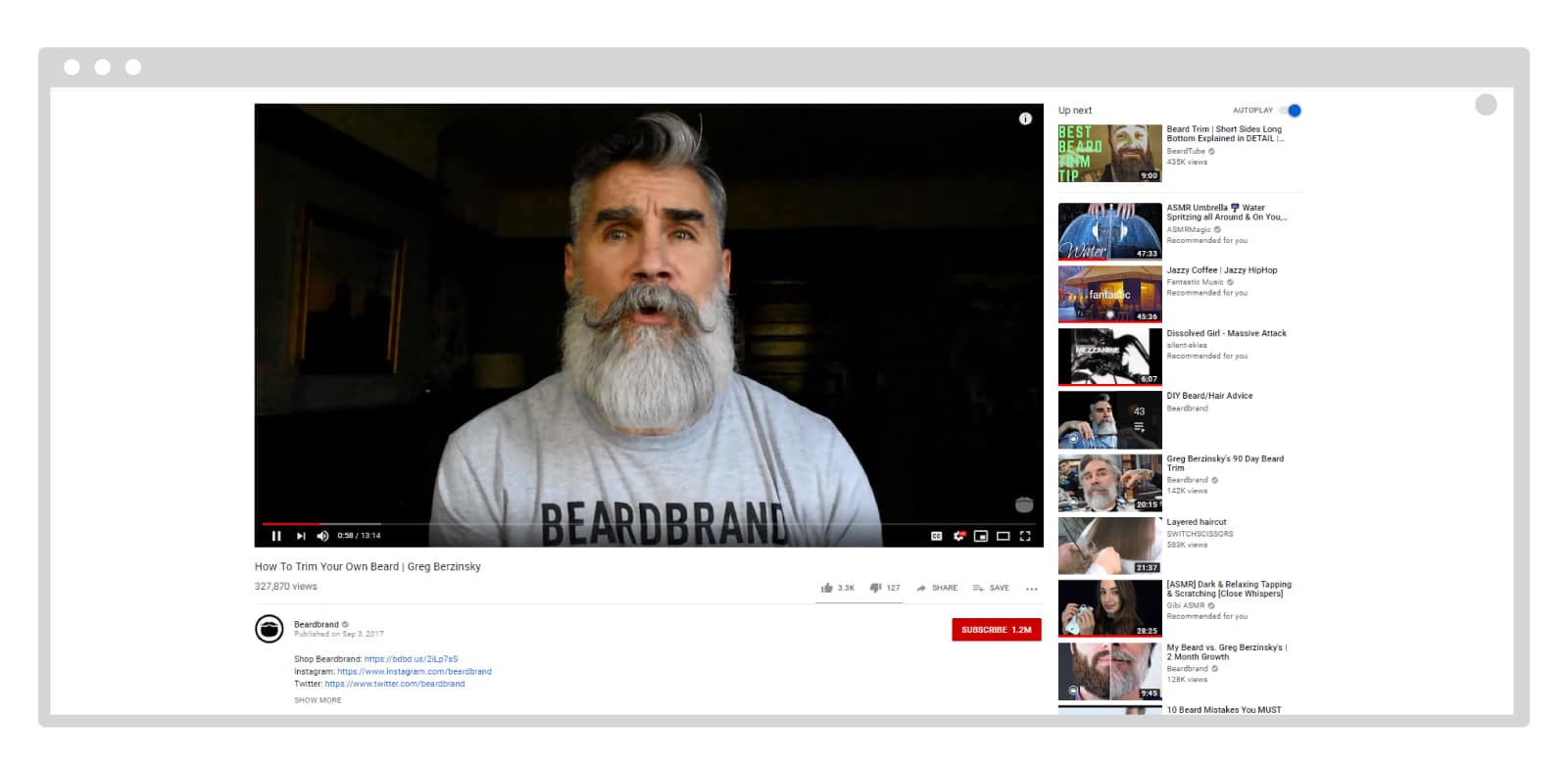
Once someone comes to their website, they try to get them to take the “Beardsman Quiz” which puts a subscriber into one of their automated email funnels.
In doing so, they are able to communicate long into the future through email marketing while making sure they’re owning the audience they’ve worked hard to gather.
This is a really important lesson from a sustainability standpoint.
Unlike your YouTube subscribers and social media followers, your email list is something you fully own. And as we’ve learned already, it averages a return of $44 for every $1 spent on email marketing. Email drives sales. So, using video to drive email subscriptions is a key strategy for successful brands that want to boost product sales and revenue.
When you publish video content on a site like YouTube or Facebook, make sure to let your audience know about your website, and direct them to click a link back to it.
If you’re posting videos on Instagram, change the website link to an email opt-in form and give your video viewers a CTA to click that link and sign up.
Once you capture a lead that comes in from your video efforts, put them into a segmented funnel that automates the right emails at the right time.
In doing so, you’re building a vital sales-focused asset while keeping communication open and giving yourself the opportunity to sell continuously over time.
5. Solo Stoves
Steal this idea: Use video to show how to set up and use your product, giving consumers the confidence to make a purchase.
It’s been proven that people would rather watch a how-to video than read vague or confusing instructions covering the same thing.
Solo Stoves caught on to that fact and has been creating a lot of recipes and cooking tutorials to help customers see just how to use their stoves to the fullest when adventuring outdoors.
However, they’ve gone a step further than simple how-to videos.
On their website, you’ll find they put together a video landing page specifically dedicated to giving people step-by-step video instructions for how to fire up (quite literally) a Solo Stove for action.
According to Google, about half of all internet users look for videos about a product or service before making a purchasing decision.
Solo Stove’s video shows how easy it is to use their product and lives on their website, which drives sales.
You can also create tutorial videos that show people how to put together, set up, and use your products correctly by bringing to light any important things they need to know (or things they shouldn’t do).
Placing these visual walkthroughs on product or landing pages can guide prospective customers, illustrating the ease of use of a product and help increase your sales.
Or after a purchase is made, they can help give a customer a great experience and keep them coming back again and again.
Either way, you win at the bank.
6. TOMS
Steal this idea: Create videos that convey your brand values to gain trust, fans, and new customers.
TOMS was built on their business on the unique Get-One-Give-One movement which gained them a lot of traction and rippled out in the business world with many others copying their business model.
As a brand with a focus on being a change for good, they took their values and infused them into their video marketing.
A look through their video content on YouTube or Facebook shows how they’re doing this. Many videos are short, but use storytelling in various ways to show what they stand for as a brand.
Some videos highlight customer or influencer stories who hold the same values as TOMS. 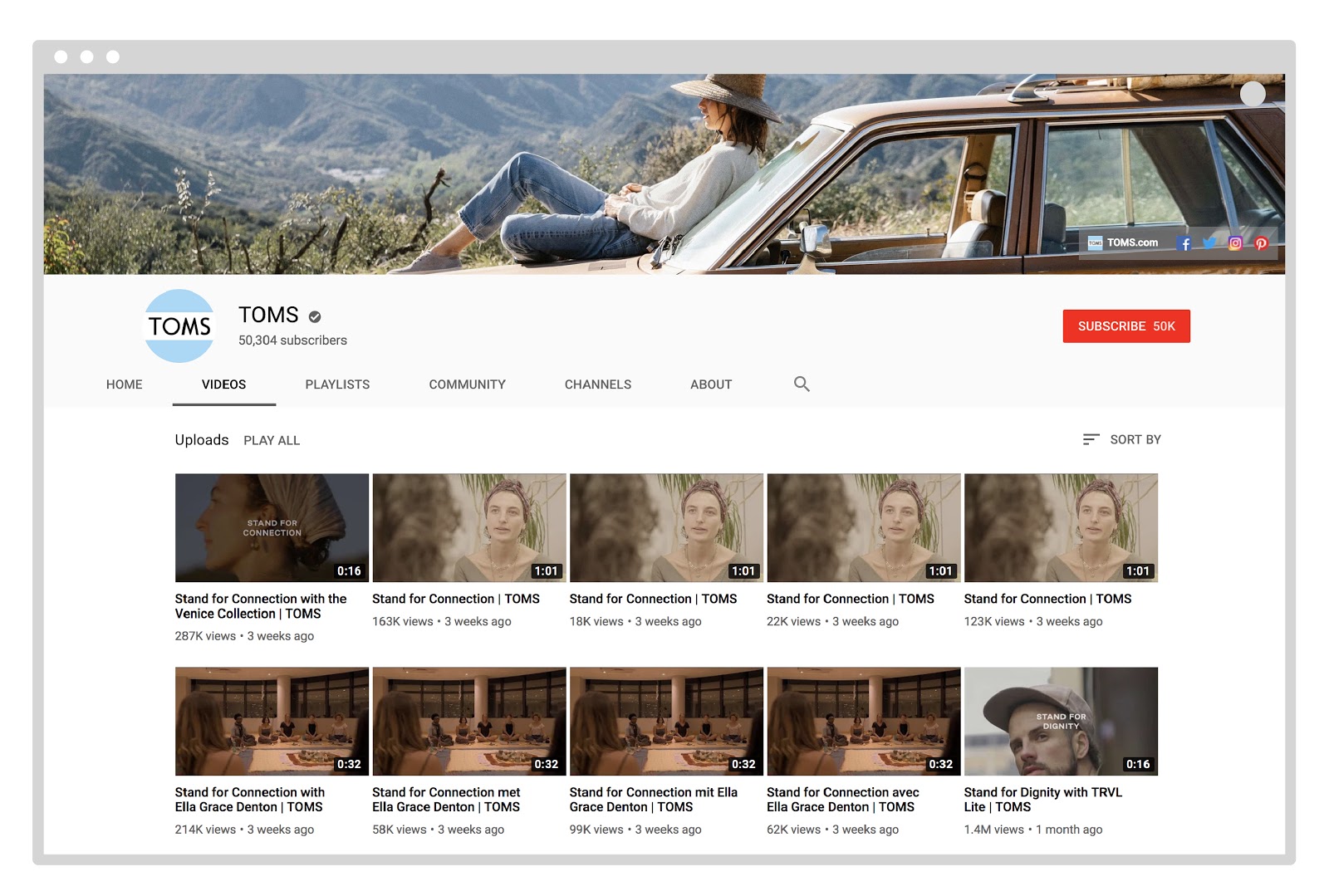
Other videos, while short, are part of a longer string that weaves the same story and values into the series. These types of videos help to humanize the TOMS brand and their transparency breeds trust in the hearts and minds of people, making it easier to get them to back their brand by purchasing products.
Zig Ziglar once said, “If people like you, they’ll listen to you. But if they trust you, they’ll do business with you.” TOMS has used shorter videos to get help gain trust that move the needle on their growth and revenue.
Look at your brand’s core values and what you stand for. Those qualities that power your internal culture can do a lot to attract customers ready to buy.
Create videos that highlight what you stand for, that tell stories of our what’s at the heart of your company. In short, be human. Connect on an emotional level.
When you have values, they make you valuable in the eyes of customers.
By creating this type of content, you’re making it easier for people to trust your brand and want to support you by buying from you.
7. Hims
Steal this idea: Turn FAQs into video to answer your customer’s most burning questions that help them trust and buy from you.
Many brands struggle to create evergreen content.
But the health brand Hims has found a brilliant way to create evergreen video for their business that they can use across all their marketing channels.
When you go to their Facebook or YouTube page, you can see how they’re doing this.
Many videos answer frequently asked questions the brand comes across that relate to their industry. It’s a very unique type of video, and since these questions are going to be asked for years to come, this content is something they can use again and again for a variety of needs and marketing initiatives.
This allows them to get the most out of creating this particular type of video.
You can create FAQ based videos just like this for your own business and products. Once they’re ready for the world to see, embed them on your FAQs page, place them on the product pages, and post them on your social channels.
These will help you not only build brand awareness, but they also provide helpful answers to your target audience about common issues in your market or regarding your products.
Most importantly, they help customers feel confident enough to make a purchase. That means these videos can drive a big uptick in conversions and sales.
8. MVMT
Steal this idea: Use social video ads to drive traffic and sales.
Video ads are often some of the best performing ads, with stats showing video performing 20% better than image-only ads.
Ecommerce apparel brand, MVMT, grew from $0 to $90 Million in under five years. How, you may wonder?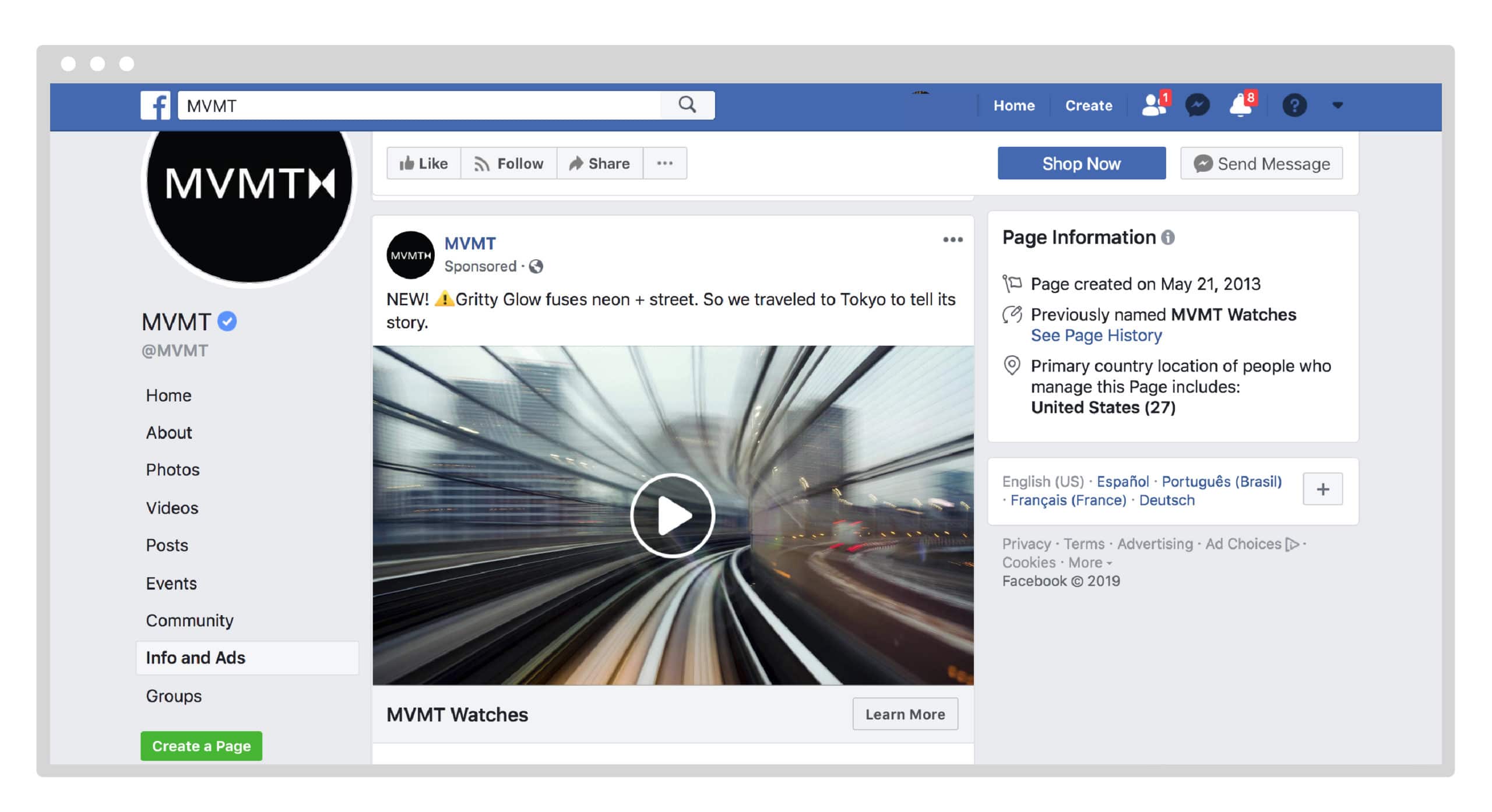
With the help of social ads, especially video on Instagram and Facebook, they were able to promote their products and gain sales which helped them scale up their business quickly.
In fact, they attribute much of their success to Facebook and Instagram ads, including their video ads which continually have some of the best engagement on the platform.
Create short and catchy video ads that put your products center stage and set them up on the platforms that seem most applicable to your brand. And if you’re worried that you need a big budget for this, don’t be.
In this day and age, when you use the right tools, putting together high-quality video ads has never been easier. Success with video ads starts by finally taking the plunge into the PPC world and then continually testing ad platforms to find the right channel and ad sets that work best for your brand.
If you want to know more about how to get started with ads on social media channels, you can read our step-by-step advertising guides to help get you started:
9. Mobile Monkey
Steal this idea: Create an automated webinar and send leads to sign up and watch to help close sales.
If you’re selling info-based or SaaS products, webinars can be a powerful selling tool.
While each brand varies in their success with webinars, some people have been able to accomplish amazing feats like 94% of attendees watching to the end with a close rate of 24%.
And an automated webinar as part of your sales funnels can bring in a constant flow of new sales to your business all on, well, autopilot. 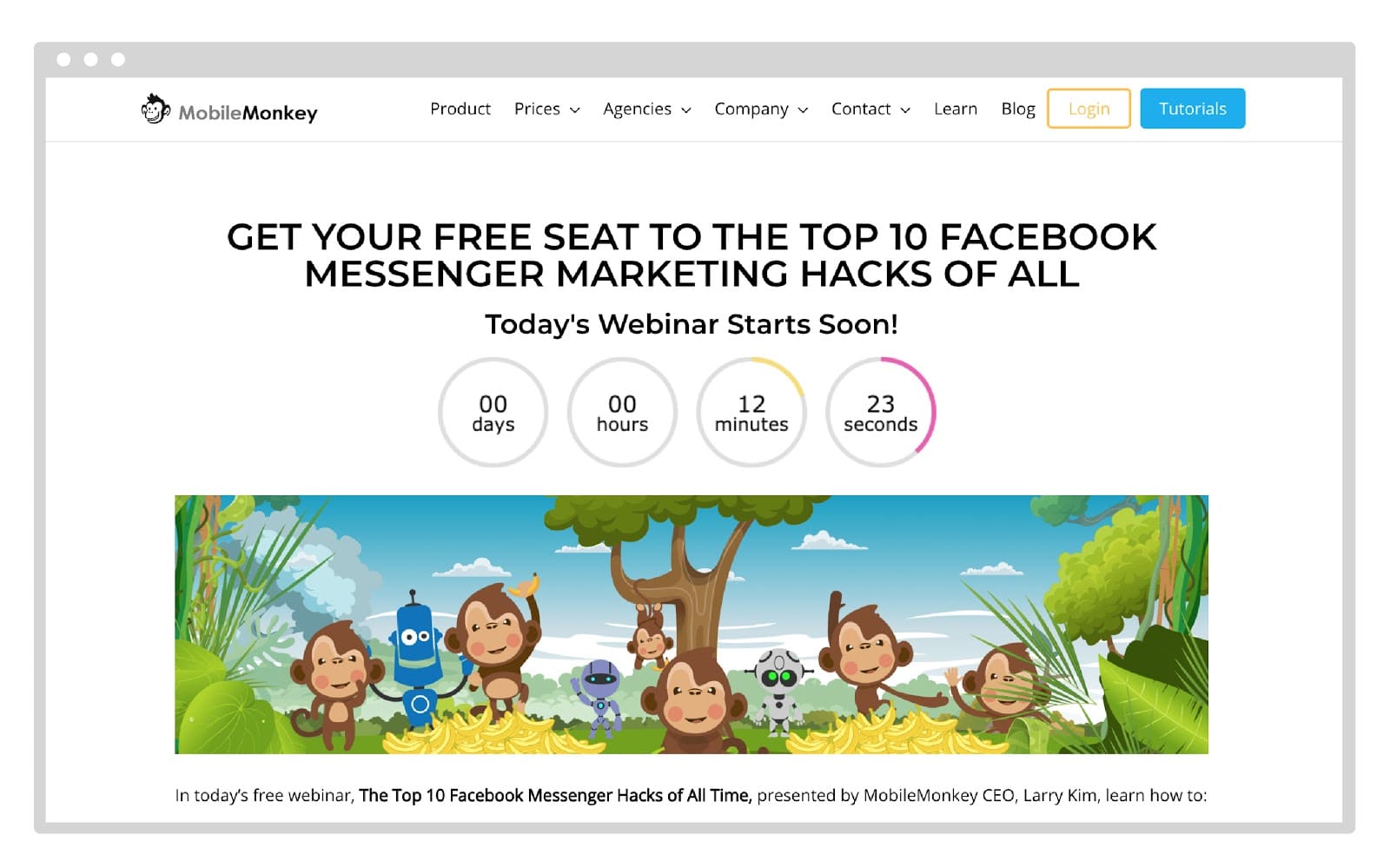 Mobile Monkey is a prime example of how to do this right.
Mobile Monkey is a prime example of how to do this right.
Not only do they have a CTA to join the webinar on the main page plus a dedicated landing page, but many of their other automated funnels point to this webinar.
As a startup, it’s important to work smarter, not harder and using video coupled with automation is a great way to qualify leads and fill your pipeline while you’re sleeping.
You can follow Mobile Monkey’s footsteps by putting on webinars and recording a couple that you host.
When you see which one performs the best, you can use a tool like Webinar Jam or Webinar Ninja to set up an automated webinar. Then you can connect your third-party email opt-in tools to your landing page and webinar tool and let the automation handle the rest while you sit back and watch the sales roll in.
10. Mt. Bachelor
Steal this idea: Partner with other brands and influencers and use video to reach new potential customers.
Mt. Bachelor is a popular outdoor recreation park and ski area.
But here’s the interesting thing about using video marketing in this setting: the product they’re essentially trying to sell is a mountain slope.
As a resort, they offer more products than just ticket passes but in order to get more sales on food, products, and other offerings they first have to get people to come to the mountain. It’s a tricky thing to market, but they do it beautifully by putting the mountain and unique features of this location on display. 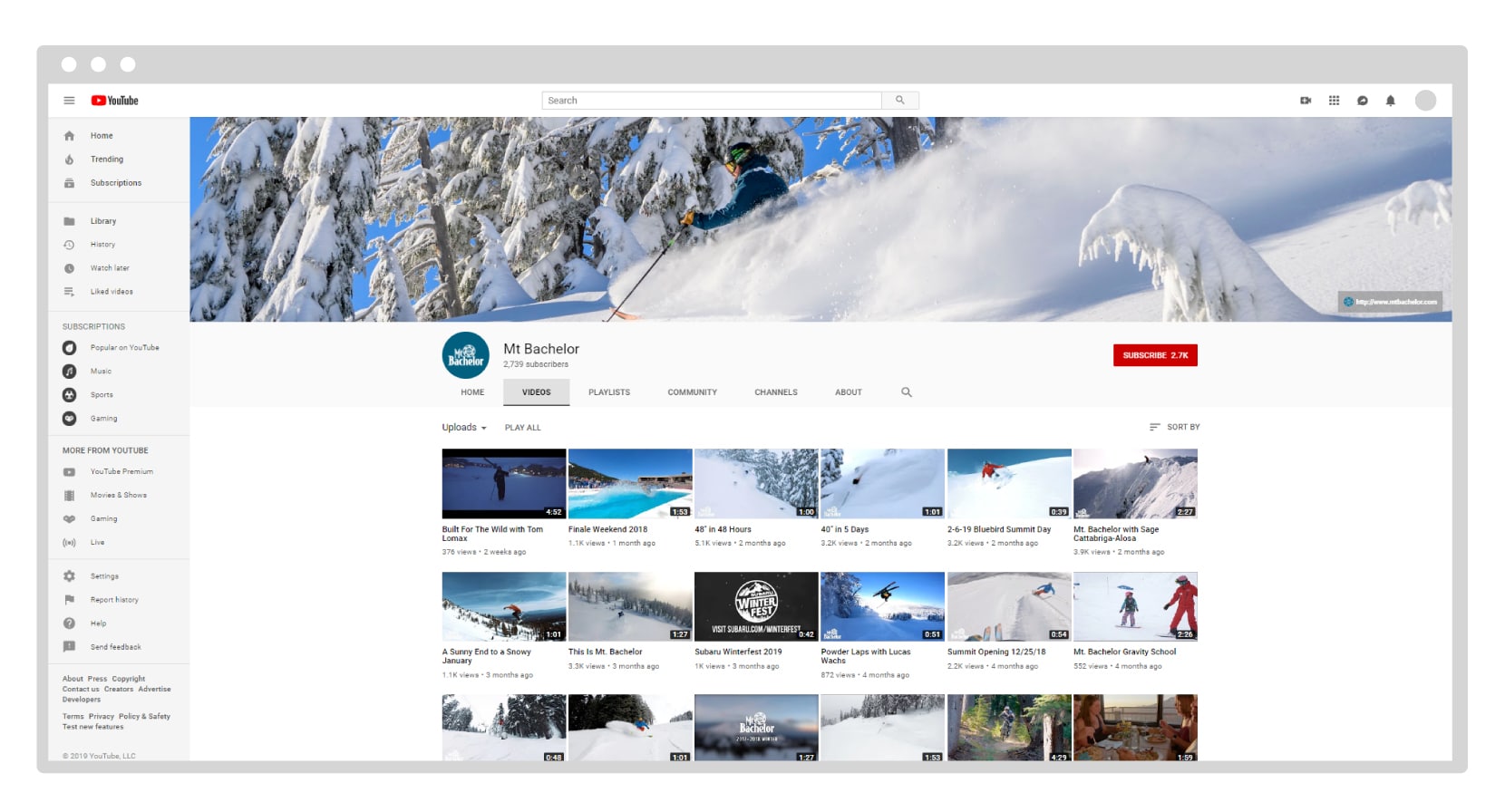 But, as you take a closer look at their video content, you see them partnering with other brands, like GoPro, in some of their videos.
But, as you take a closer look at their video content, you see them partnering with other brands, like GoPro, in some of their videos.
The brands they often feature or partner with appeal to their current audience while allowing Mt. Bachelor to increase the reach of their brand past their fan base. This could be a huge boost. For instance, GoPro has 2 million followers on Twitter. So the collaboration helps the marketing team at Mt. Bachelor reach new heights.
Plus, when good brands work together, they boost their own social proof which builds trust while sending potential customers to each other’s digital (or physical) doors.
There’s no doubt there’s room in your industry to do the same.
What other brands or video influencers are out there that share your target audience that you can partner with? Are there any brands that complement your own? That can be a great place to start when looking for other ways to promote your products outside of your current audience.
Videos work to bring in revenue regardless of your industry
The 10 brands we looked over are from very different industries, and yet, video marketing is a central part of their strategy for driving sales. They each found unique ways to use videos to grow their businesses And you can, too. You can also tell your story, and you can do it in a 30 second video – our video maker is a great tool to help you put professional-level videos together for your brand.
No matter what industry you’re in or what market you’re targeting, you can see great results from videos. Make sure to try these ideas from the brands above and take bigger steps to using videos more frequently take your marketing efforts to the next level.
